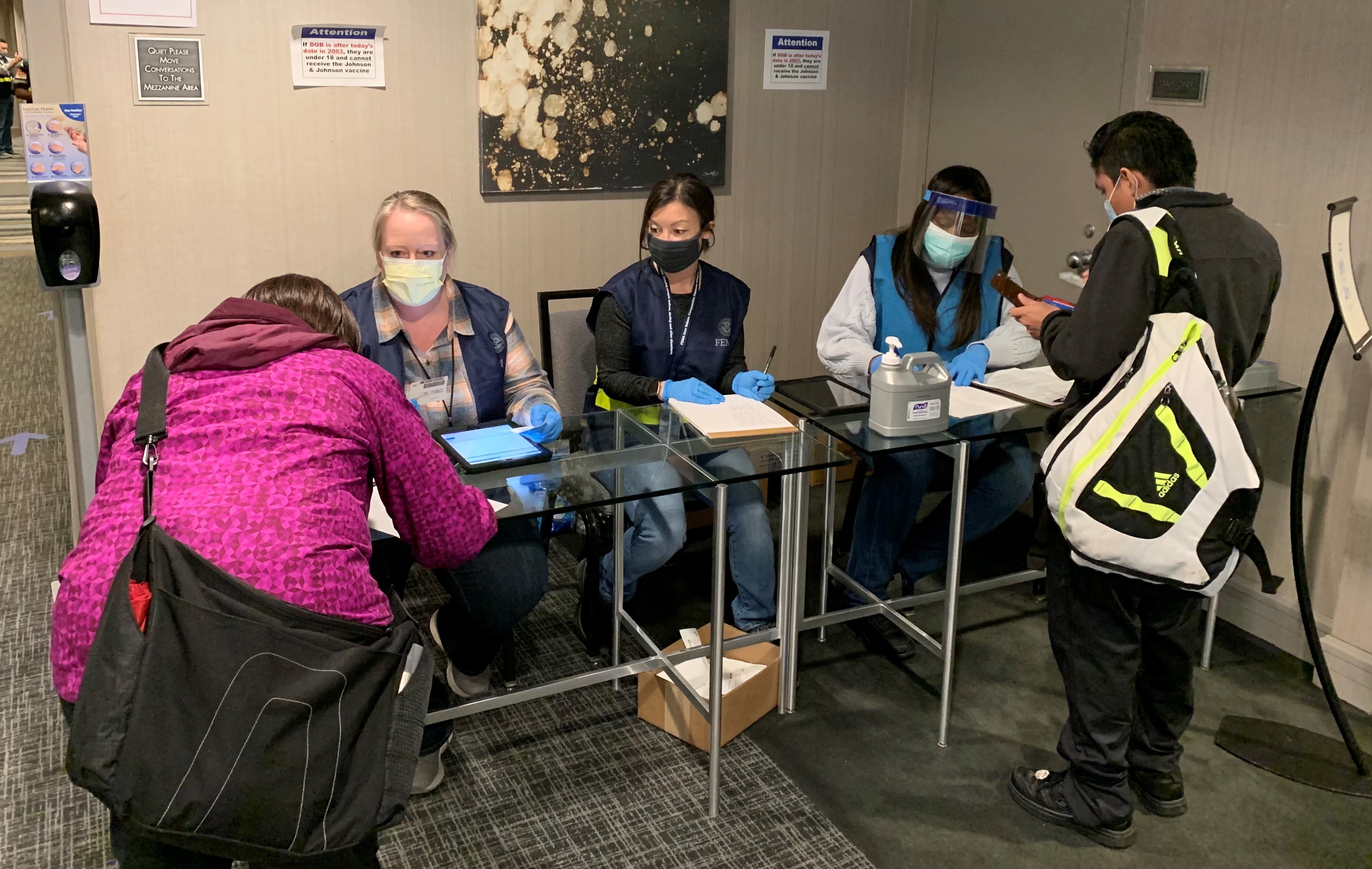 Members of TSA’s Surge Capacity Force who are working for FEMA in Chicago at a vaccination site, staff the registration desk as people come in for their vaccines. They are (from the left) Heidi Blake from TSA’s headquarters-based Inspections Office; Elizabeth Ramirez, a program analyst from Detroit Metropolitan Wayne County Airport; and Tasha Broxton, a Coordination Center Officer from Newark-Liberty International Airport. (Photo by Marvin Rucker)
Members of TSA’s Surge Capacity Force who are working for FEMA in Chicago at a vaccination site, staff the registration desk as people come in for their vaccines. They are (from the left) Heidi Blake from TSA’s headquarters-based Inspections Office; Elizabeth Ramirez, a program analyst from Detroit Metropolitan Wayne County Airport; and Tasha Broxton, a Coordination Center Officer from Newark-Liberty International Airport. (Photo by Marvin Rucker)
WASHINGTON – Approximately 50 members of the Transportation Security Administration (TSA) workforce are augmenting the Federal Emergency Management Agency’s (FEMA) pandemic response and volunteering to assist at various community vaccination centers.
These volunteers serve on TSA’s Surge Capacity Force (SCF), which is a program for federal employees within the Department of Homeland Security (DHS) and other federal agencies that allows non-FEMA employees an opportunity to support disaster response efforts. These individuals leave their regular jobs and deploy for up to 45 days to assist FEMA where needed in the response effort.
“TSA employees who volunteer to serve on the Surge Capacity Force have an inner passion that drives them to help others in need,” said Darby LaJoye, Senior Official Performing the Duties of the TSA Administrator. “They leave the comfort of their homes, families and jobs to join FEMA’s efforts for weeks at a time. The push to vaccinate more Americans represents a fine example of how TSA and other DHS components jointly support the greater calling to assist our fellow Americans.”
TSA’s Surge Capacity Force consists of approximately 400 volunteers who have typically been deployed to assist FEMA’s hurricane relief efforts. Earlier this month, TSA employees not among the screening workforce deployed to vaccination sites in Chicago, IL, and Providence, R.I., to support President Biden’s goal of administering 100 million vaccines within the first 100 days of his administration. The volunteers are performing administrative duties and assisting with logistics to help deliver vaccines to Americans.
The TSA employees received training for their FEMA mission in Texas, then deployed to their designated communities to begin assisting with the vaccination response. If they had not already received a vaccine and elected to be voluntarily vaccinated, one was administered to them when they arrived at their designated site.
The Surge Capacity Force, first authorized by Congress as part of the Post-Katrina Emergency Management Reform Act of 2006, was designed to allow all DHS staff an opportunity to help communities and survivors following a large-scale disaster. The program was previously activated in 2012, when 1,100 non-FEMA DHS employees supported disaster response and recovery in the aftermath of Hurricane Sandy and again in 2017 when more than 4,000 staff members assisted Americans impacted by hurricanes Harvey, Irma and Maria.
